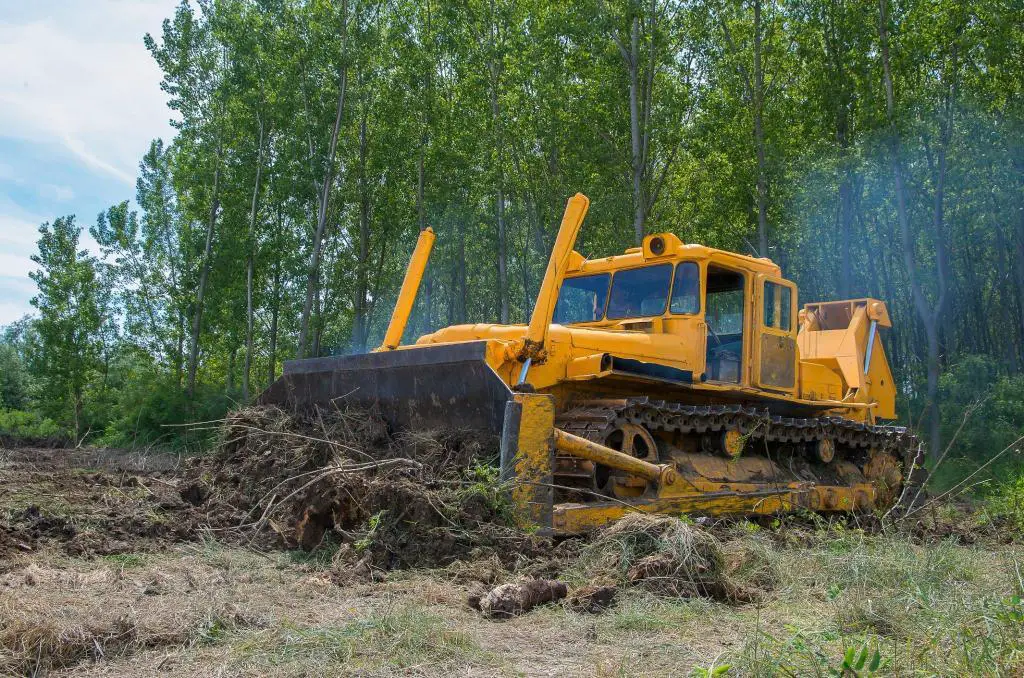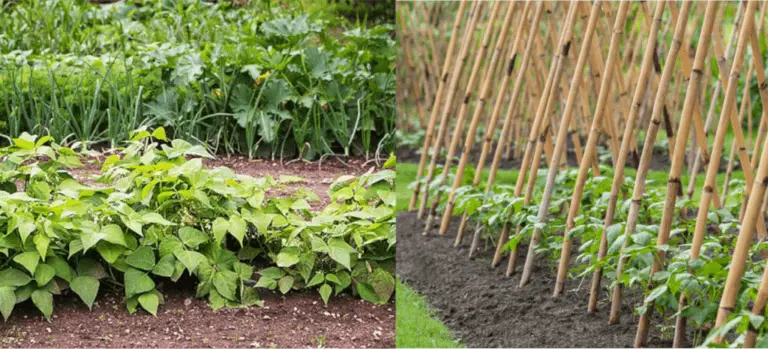How To Clear Land Without Heavy Equipment: DIY Land Clearing

If you’re dreaming of owning a piece of land but it’s covered in bushes, trees, and other obstacles, don’t give up just yet. Clearing land can be an intimidating and expensive task, especially if you’re thinking about using heavy equipment. But what if we told you that you could do it yourself without breaking the bank?
The truth is, you don’t necessarily need expensive machinery to get the job done. That’s right, with a little bit of hard work, creativity, and some DIY skills, you can transform a wild and untamed piece of land into a beautiful and functional space.
In this article, we’ll show you how to clear land without heavy equipment and make your land clearing dreams a reality. Get ready to roll up your sleeves and dive into the exciting world of DIY land clearing!
Why Do You Want To Clear Land Without Heavy Equipment?
When considering clearing land for any purpose, it’s crucial to look at the tools and equipment you plan to use. One option is to clear land using heavy equipment. Heavy equipment such as excavators, backhoes, bulldozers are used for clearing land.
While these machines can complete tasks quickly and efficiently, they have significant drawbacks that may cause you to reconsider using them.
- Firstly, using heavy equipment to clear land can be incredibly expensive. Renting or purchasing these machines can be prohibitively expensive, especially if you only need to clear a small area. You’ll also have to factor in the cost of fuel and maintenance, which can add up quickly.
- Using heavy equipment to clear land can cause significant damage to the environment. These machines are heavy and can compact soil, which can lead to soil erosion and poor drainage. Heavy equipment can also damage trees and other vegetation, making it difficult for them to regrow.
- Using heavy equipment to clear land can be dangerous, especially if you don’t have experience operating it. Accidents can occur, causing injury or even death, and the potential liability is high.
- Finally, it can be noisy and disruptive to the surrounding community. The loud engine noise and vibrations can disturb people and wildlife, and the dust and debris can create a mess that takes time to clean up.
Clearing land without heavy equipment, on the other hand, has several advantages. It can be a more affordable and environmentally-friendly option that avoids soil compaction and damage to trees and vegetation. Clearing land without heavy equipment can also be quieter, safer, and less disruptive to the surrounding community.
Assessing the Land Before Clearing
Before beginning any land-clearing project, it’s essential to assess the land to determine the best approach. The assessment process can help you understand the type of terrain you’ll be working with, any potential hazards or obstacles, and the type and density of vegetation you need to clear.
Here are some key factors to consider when assessing the land for a DIY land-clearing project.
- The first step in assessing the land is to identify any potential hazards or obstacles. This can include things like large rocks, stumps, or standing water. These hazards can be dangerous to work around and can also affect the approach you take when clearing the land. For example, you may need to remove rocks or stumps before you can begin clearing the vegetation.
- The next step is to evaluate the type of vegetation on the land. This can include trees, shrubs, and other types of plants. Understanding the type and density of vegetation can help you determine the best approach to clearing the land. For example, if there are many trees on the land, you may need to use a chainsaw to remove them, while if there are only shrubs, you may be able to use hand tools like loppers or pruning shears.
- You’ll also need to consider the terrain when assessing the land. If the land is hilly or has a lot of uneven terrain, it may be more challenging to clear, and you may need to take extra precautions to ensure your safety. Additionally, if the land is wet or swampy, it may be more difficult to work with, and you may need to use specialized equipment or techniques to clear the land.
- Finally, it’s important to consider the size of the land and the scope of the project. If you’re only clearing a small area, you may be able to do it yourself using hand tools. However, if you’re clearing a larger area, you may need to enlist the help of others or rent specialized equipment to get the job done efficiently.
How To Clear Land Without Heavy Equipment
There are a few different methods you can use to clear land without heavy equipment. Let’s explore some of the most effective options.
1. Hand Tools
Hand tools are the most basic option for land clearing, but they can still be effective if you have the time and energy to put in the work. Some of the most common hand tools used for land clearing include:
- Shovel: A shovel can be used to remove small rocks, roots, and other debris from the ground.
- Mattock: A mattock is a combination tool with a pick on one end and an adze on the other. It’s useful for breaking up hard soil and cutting through roots.
- Hoe: A hoe is another tool that can be used to break up soil and remove debris.
Using hand tools requires a significant amount of physical labor, so it’s important to take breaks and stay hydrated. However, this method is also the most environmentally friendly, as it doesn’t require the use of any machinery or chemicals.
2. Controlled Burning
Controlled burning is another option for land clearing, but it should only be used in certain situations. If you’re working with a large plot of land that is covered in dry brush or weeds, controlled burning can be an effective way to clear the area quickly.
However, it’s important to take precautions to prevent the fire from spreading uncontrollably. Make sure you have a permit from your local fire department before attempting any controlled burns, and never attempt this method on a windy day.
3. Chemicals
Chemicals are the least labor-intensive option for land clearing, but they’re also the most controversial. Many chemicals used for land clearing, such as glyphosate, have been linked to environmental and health concerns.
If you do choose to use chemicals, make sure you follow all instructions carefully and wear protective gear to avoid contact with the chemical. Additionally, be aware of any regulations or restrictions on chemical use in your area.
Tips for Successful Land Clearing
No matter what method you choose for clearing your land, there are some tips you can follow to make the process more successful.
- Start small: Clearing a large plot of land can be overwhelming, so it’s important to break the task down into smaller sections. Start with a small area and work your way up as you gain more experience and confidence.
- Stay safe: Land clearing can be dangerous work, so it’s important to take precautions to avoid injury. Wear protective gear, stay hydrated, and take breaks as needed.
- Use proper technique: Whether you’re using hand tools or chemicals, make sure you’re using them properly. Improper technique can lead to inefficiency, damage to the land, and even injury.
- Have a plan for debris: Before you begin clearing, make sure you have a plan for what to do with the debris you’ll be removing from the land. This could include composting, recycling, or disposing of the debris at a designated facility.
- Consider the environment: When clearing land, it’s important to consider the impact on the environment. Avoid using chemicals if possible, and make sure you’re not disrupting any important ecosystems or habitats.
DIY Land Clearing Process
Now that we’ve covered some of the methods and tips for clearing land without heavy equipment, let’s outline the DIY land clearing process step by step.
- Assess the land: Before you begin any clearing, assess the land you’re working with to identify any obstacles or potential hazards.
- Remove debris: Use hand tools or chemical treatments to remove any debris, such as rocks, roots, or small trees, from the area.
- Mark the boundaries: Mark the boundaries of the area you’re clearing with stakes or flags to keep yourself oriented and avoid accidentally clearing outside the desired area.
- Clear brush: Use a pruning saw or loppers to cut back any small trees or shrubs in the area. Be sure to dispose of the debris properly.
- Mow grass: If the area has tall grass, use a lawn mower or weed trimmer to cut it down to a manageable height.
- Remove stumps: Use a mattock or pickaxe to break up any stumps in the area. This can be a time-consuming process, so be patient and take breaks as needed.
- Level the ground: Use a rake or hoe to level the ground and remove any remaining debris.
- Seed or plant: If you’re planning to use the cleared area for gardening or landscaping, now is the time to plant seeds or plants.
When to Hire Professional Land Clearing Services and How to Choose
Clearing land on your own can be a fulfilling and rewarding experience, but sometimes it’s best to hire professional land clearing services. Knowing when to call in the experts and how to choose the right company can save you time, money, and potential injury.
First and foremost, consider the size and complexity of the land clearing project. If you’re working with a large area or obstacles like large trees, boulders, or steep terrain, it may be best to hire professionals with the equipment and experience to do the job safely and efficiently.
Additionally, if you’re dealing with hazardous materials such as asbestos, lead, or other toxins, it’s crucial to bring in professionals with the proper training and equipment to handle the situation.
Another factor to consider is your own physical ability and comfort level. Land clearing can be a physically demanding task, and if you have a medical condition or limited mobility, it may be best to leave it to the professionals. Similarly, if you don’t have experience with heavy machinery or tools, attempting to clear land on your own could put you at risk of injury or property damage.
When it comes to choosing a professional land clearing service, there are several factors to keep in mind. First, do your research and ask for recommendations from friends, family, or neighbors who have had similar work done. Look for companies with a proven track record and positive customer reviews.
Next, make sure the company is licensed, insured, and bonded. This protects both you and the company in case of accidents or damages. It’s also important to ask about their safety protocols and equipment maintenance procedures to ensure they prioritize safety and are using reliable machinery.
Finally, ask for a detailed estimate and timeline for the project. A reputable company will provide a clear breakdown of the costs and time involved, and will be transparent
Conclusion
Clearing land without heavy equipment can be a time-consuming and physically demanding task, but it’s also a rewarding one. By following these tips and methods, you can successfully clear land on your own, without the need for expensive machinery.
Just remember to take your time, stay safe, and consider the impact on the environment as you work. With a little patience and hard work, you can transform your land into a beautiful and functional dong dong pret space.





